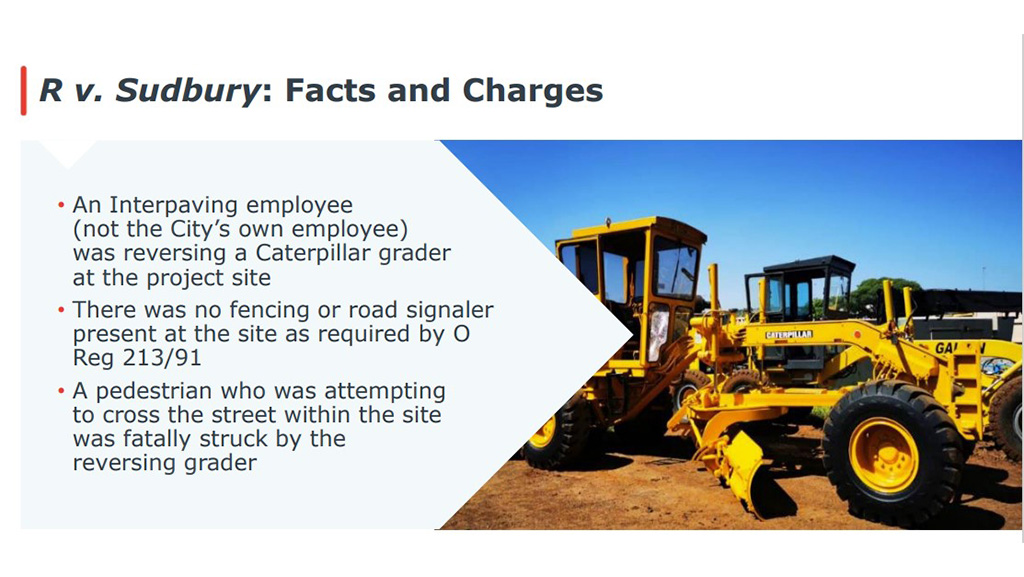Ontario consulting engineers are being told they too have a raft of new occupational health and safety responsibilities to tend to in the wake of last November’s landmark Supreme Court of Canada decision in R. v. Greater Sudbury, just as project owners do.
The ruling set off alarm bells throughout the construction sector with stakeholders scrambling to understand their new responsibilities within construction’s internal responsibility system.
Lawyer Victor Kim of McMillan’s National Construction Group explained during a recent webinar the City of Sudbury was found to have breached its obligations as an employer by failing to ensure Occupational Health and Safety Act (OHSA) compliance on a city jobsite, even though the city did not have control over the entire site.
“This means that if you’re a consultant on a construction site, you can be charged as an employer for that entire site, even though you have no control over the site or construction workers based on the Court of Appeals decision,” said Kim.
The case stems from a 2015 incident in which a road grader driven by an employee of Interpaving Limited struck and killed a pedestrian while driving in reverse through an intersection. The city’s role was limited to having employees onsite for quality assurance.
A “troublesome” decision
During the Feb. 28 webinar, a legal panel assembled by the Association of Consulting Engineering Companies – Ontario waded through how the decision impacts the obligations and potential liabilities of consulting engineers in their role as designers and contract administrators.
Yes, said Kim, consulting engineers, even solo practitioners, can now be considered employers and can be charged by Ministry of Labour inspectors, a development Kim called “troublesome” and which his colleague Patrick Groom called “horrible.”
“It doesn’t necessarily mean that everybody under the sun will get charged, but the potential is there,” said Groom, noting that so far the inspectors have shown restraint. “And until we get more clarification from the courts or until we get an amendment to the health and safety act from the province, that potential is what we have to be conscious of and protect ourselves from.”
Groom said discussions have indicated that the ministry will not introduce a fix to the OHSA in the near future, preferring to wait until courts can rule on the issue of whether the City of Sudbury exercised due diligence as an employer on the site.
And so, he said, it’s imperative that consulting engineers take steps to protect themselves. It starts with building a case to illustrate their own due diligence, said Groom.
What is the consultant’s “duty of care”?
Groom identified five strategies engineers should follow:
Engineers are not expected to become OH&S experts immediately so they should “stay in their lane.”
Ensure proper training of employees at sites, including themselves.
Confirm an appropriate occupational health and safety management system is in place.
Report identified hazards immediately.
Try to maintain the delicate balance between reporting and preserving relationships with project owners, but don’t be pushovers if owners attempt to pass along their OH&S responsibilities.
“The second element means following up with the constructor, making sure, for example, your employees, or even yourself, actually get to that site orientation meeting, actually get to attend that toolbox talk that is dealing with the area that you’re going to be working in,” said Groom.
“Again, this goes back to building your own case for a duty of care.”
Some owners are being “reactive” and “overbroad” in creating bidding documents, requiring numerous parties to have COR or ISOv45001 certification, Groom noted.
“Should a consultant, an architect, an engineer who’s being brought onsite…should they actually have their own health and safety management system? That seems to be where some owners are going right now,” he said.
Follow the author on X/Twitter @DonWall_DCN.






Recent Comments
comments for this post are closed